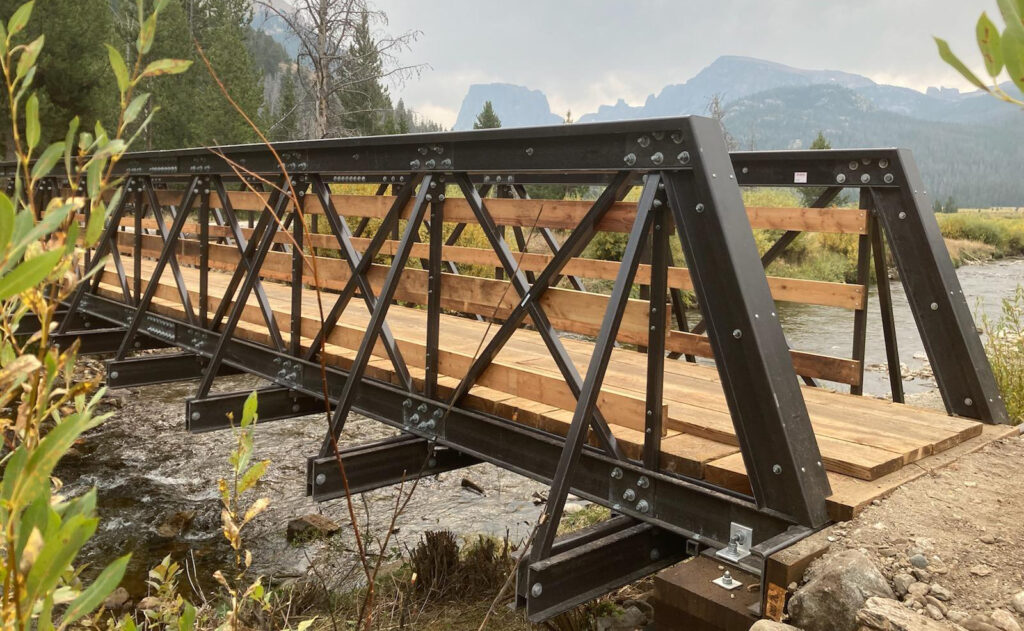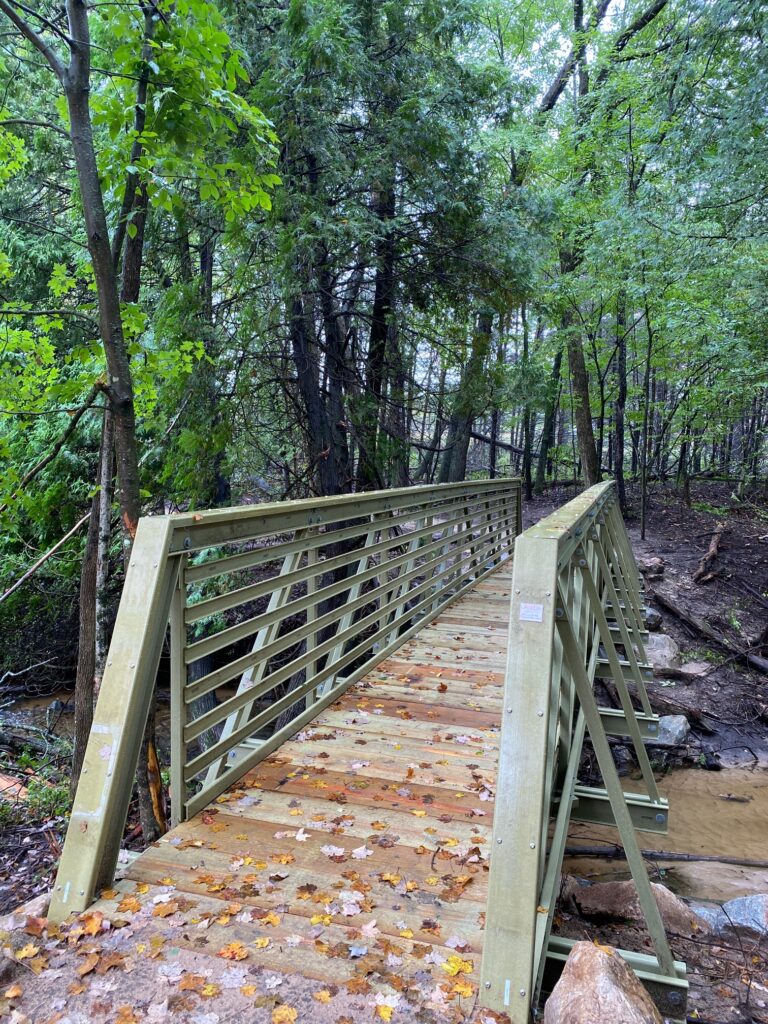You will need to consider many factors during the bridge construction process that will impact the total price, whether you’re building a pedestrian bridge for a park or community space. This article will review the three primary bridge factors that will determine the overall cost of building a pedestrian bridge: material, construction, maintenance costs.
Bridge Elements that Determine the Overall Cost of Building a Pedestrian Bridge
It’s important to remember that your bridge’s cost will vary based on its size, material, construction costs, operational/maintenance upkeep, and bridge site location. In general, if you wanted a 20 linear foot fiber reinforced polymer (FRP) truss bridge, the average price would be around $18,000. Please note that this is only an estimate.
#1 Material Costs
One of the essential elements of a bridge is the material used for its construction. The material impacts the following costs:
- Upfront
- Transportation
- Ongoing maintenance
- Repairs
This article will compare fiber reinforced polymer, wood, and steel bridges to help you understand the material difference with the overall price of the bridge.
Fiber Reinforced Polymer (FRP)
FRP is a lightweight, durable material that upholds well against the elements. As a result, FRP bridges have a slightly higher upfront cost, but can provide long-term cost savings.
The typical cost of an FRP truss bridge (depending on the length and width) is $600 – $1200/linear foot (LF).
The typical cost of an FRP stringer/beam bridge (depending on the length and width) is $350 – $650/LF.
Cost estimates above are for an FRP bridge width range between 4ft and 6ft wide.
Wood
Wood is the traditional bridge material with a low upfront cost, but long-term maintenance is costly.
Wood truss bridges are not very common; however, the estimated cost of a wood stringer/beam bridge (assuming 6ft wide ) is $300 – $400/LF.
Steel
A steel bridge upfront cost is higher than wood and slightly lower than FRP. Due to its heavyweight, steel bridge parts are challenging and expensive to transport to the onsite location.
The average cost of a steel truss bridge (depending on the length and width) is $500 – $2,000/LF.
The average cost of a steel stringer/beam bridge (depending on the length and width) is $400 – $1,600/LF.
#2 Construction Costs
Make sure to consider the transportation and labor amount when calculating the bridge’s price because the money you save with the materials used could cost you more during the construction.
FRP
FRP bridge parts are approximately a quarter of the weight of steel parts, making them the ideal material for remote locations. Its low weight and prefabricated parts also contribute to reduced construction costs.
FRP bridge parts can be:
- Hand-carried to the construction site
- Assembled using unskilled labor
- Built using hand tools
FRP weight is approximately 125 pounds per cubic foot. For most FRP pedestrian bridges, the maximum member weight is less than 135 lbs.
Wood
Wood bridge parts have the lowest density compared to the three materials; however, they are typically not as strong, so costs can become higher. In addition, labor, assembly, and transportation costs could add up because of the skilled labor machinery needed to assemble the bridge.
Wood weight is approximately 25 to 52 pounds per cubic foot. The typical Glulam Beam (21” high x 3-½” wide x 30ft Long) could weigh up to 540lbs.
Steel
Steel bridge parts are heavy and are typically fully or partially assembled when they leave the factory, resulting in costly transportation fees. Building a steel bridge in a remote location might not be possible if the components can’t be delivered. Additionally, steel bridge parts need to be assembled using skilled labor and heavy machinery.
Steel weight is approximately 500 pounds per cubic foot. The fully assembled steel truss bridge could weigh between 5,000 lbs (for a 40ft bridge) to 18,000 lbs (for a 135ft) bridge.
#3 Operational and Maintenance Costs
Comparing your upfront costs to long-term labor, repairs, and eventual replacement is necessary to select which material to use for the bridge.
FRP
FRP has a 100+ year lifespan with minimal maintenance and is UV and corrosion-resistant.
Wood
A wooden bridge’s lifespan may be as few as 25-50 years and will require ongoing maintenance every few years through its life.
Steel
A steel bridge may have a 100+ year lifespan depending on the environment. However, it will require regular maintenance to withstand the elements.
Are You Ready to Request an Official Quote?
When building a pedestrian bridge, you’ll need to consider multiple factors to ensure you select the right bridge for your project and budget. If you’re ready to start the process, request an official quote now or contact our team for more information regarding your project.





